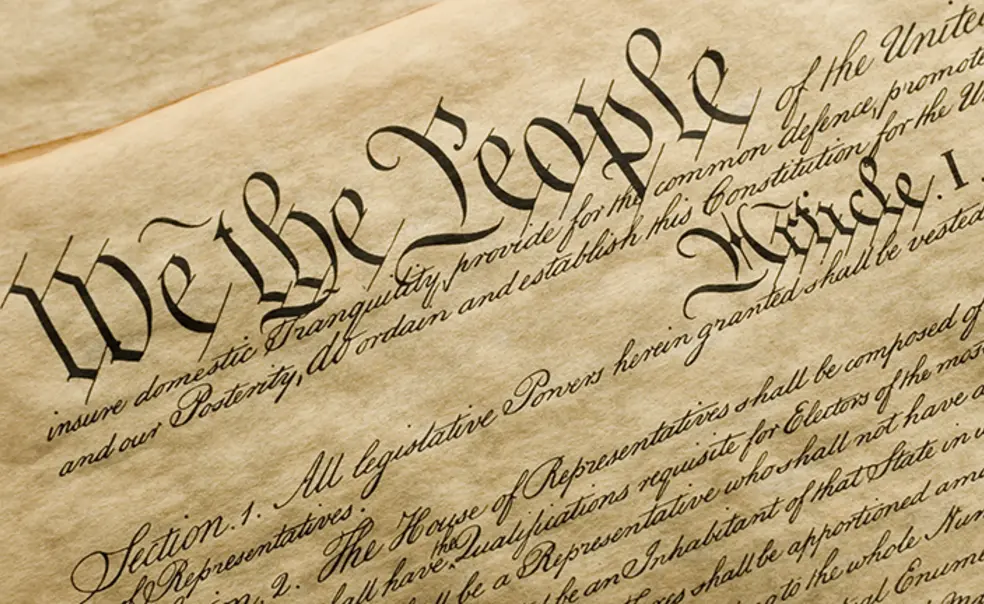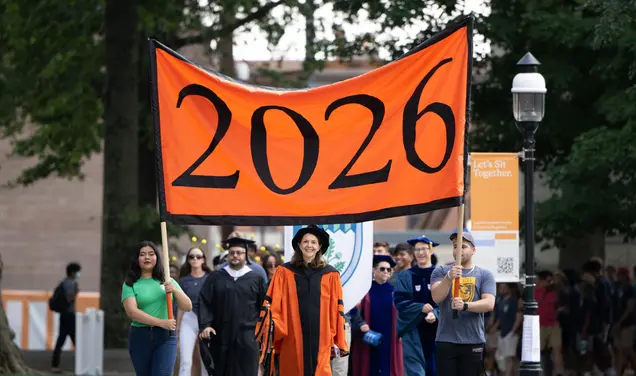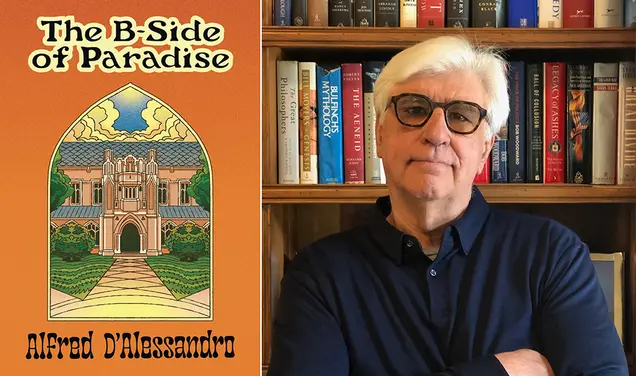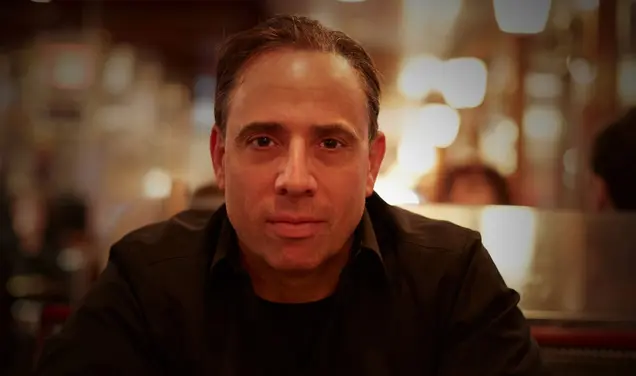Rally ’Round the Cannon: Checks and Balances
If the system is broken, my inclination is to fix it rather than to fight it.
— Supreme Court Justice Sonia Sotomayor ’76
The Grinch has been on the ascendant so far this academic year, even to the point of Wintersession being blown away by the purported federal government and its cynical harassment of the resolve of American universities. So it’s incumbent upon us here in the History Corner to put a little extra oomph into our annual seasonal holiday gift to you, the Rugged Historian, to keep spirits up as we glug spirits down and do a spirited deconstruction of the flaming trainwreck of the past year, to guard against an inadvertent recurrence, if not worse. We may not have the ability to resurrect the East Wing, but we can replicate the enthusiasm of The West Wing’s Josh Lyman, who on a productive day exults, “I drink from the keg of glory. Bring me the finest muffins and bagels in all the land!”
So what the heck, let’s change the Constitution. What’s to lose?
It might not surprise you that this idea has arisen before. Obviously, at least 25 times given the number of existing amendments on the books (let’s overlook for the moment the silly one about nobody drinking, including its tacit glorification of the mob and the federal law enforcement created to combat it, plus the need for an additional amendment to let everybody try to pretend it never happened). But those other amendments deal with specific shortcomings rather than general concepts, and perhaps it’s time for a dronish look from 10,000 feet, to see if we can figure out what’s really going on here. Or not.
That very same idea arose here in Princeton before as well, and if you had ever happened to chance across Professor Eric Goldman, that would make perfect sense. He was one of the central figures in the broadening and deepening of the history department following World War II in response to an entering generation of students who had been mauled by the forces of history during the war, and felt that serious knowledge of those forces was the precursor of controlling them from here on out. Legendary history professors were on hand to meet the demand in what became (over the next 20 years or so) the preeminent history teaching faculty, arguably on the planet. E.H. “Jinks” (or “Jinx,” no one seemed quite sure) Harbison 1928, valedictorian of his class, taught Renaissance and Reformation; W.P. “Buzzer” Hall taught the great sweep of European and British history; Joseph Strayer 1925 taught medieval history, and crucially chaired the department for 20 years (1942-62) during which it stretched and prospered. This would then continue with such crucial additions in the ’60s of James Billington ’50 in Russian studies; the singular Civil War scholar James MacPherson; and Nancy Weiss Malkiel, the first woman history professor, who taught modern American history. Bridging all these, and constantly beating them out in the Nassau Herald’s best lecturer ratings, was Goldman.
He had arrived on the scene in 1942, only 26 years old, after finishing his Ph.D. at Johns Hopkins at 22, then writing for Time magazine. He spent 43 years on the faculty teaching modern American history, principally through the lens of reform movements and how they had advanced the cause of democracy and the prosperity of the American people. His seminal work was written in 1952 (in the midst of the McCarthy congressional fiasco) and entitled Rendezvous with Destiny: A History of Modern American Reform. It traced liberalist movements over 80 years, mercilessly criticized the shortcomings of many of them, excoriated communism and McCarthyism, and won the Bancroft Prize for historical writing. It was used all over the country as a text in history courses, including his own History 307 — Modern America — which was for years the largest course on campus. He advised dozens of theses and was forced to turn down dozens more. He was also a public intellectual at the dawn of the television age, not only appearing on news shows and panels, but hosting NBC’s The Open Mind for eight years and winning two Emmys along the way. When Lyndon Johnson abruptly succeeded John Kennedy as president in 1963, Goldman was one of the first advisers he called on; Goldman hung in there for three years and the Civil Rights legislation, then left as Vietnam became an albatross. He was president of the Society of American Historians from 1962-69.
So Goldman was one of the few educators with the heft, in the buttoned-down America of 1958 following the Sputnik PR disaster, to engage his phalanx of History 307 students — 371 of them that fall — with a breathtakingly sweeping added component midway through the course. Given the logic that American reforms (as the course examined) would reflect positively or negatively on the documents of the founding fathers, he gave the students a chance to figure out what should be done about it, legally. If they had it to do again, what would they include in the Constitution? The mechanism to do this was elegantly simple. He and the preceptors picked out the 15 students who had performed the best in the course through the midterms; they would form the working group. (If they agreed to the extra work, they got excused from the final; no one demurred. Duh.) They comprised six Republicans, one Democrat, and eight “independents,” not an atypical group for 1958 at Princeton. They would draft a new set of laws, then the course members as a whole would act as a constitutional convention to vote various articles up or down.
The process settled on by the 15 was simple but daunting. They split the existing document into six parts, then spent one long session each deconstructing the six in the context of modern America (nuclear weapons, civil rights, the Cold War, Korea etc.). Proposals for changes were voted on, with 2/3 required for inclusion/exclusion. The final approved changes would be presented to the body of 371 for ratification. Lest you suspect there was anything but serious ground-level analysis going on, the number of changes approved by the working group ended up at 41. Seven of them, all strongly supported, became the meat of the entire exercise:
- Doing away with the Electoral College (and creating equal voting rights across all states, similar to the later Voting Rights Act)
- Eliminating the filibuster in the Senate (check your morning paper today)
- Setting up clear guidelines to respond to incapacity of the president (akin to the later 25th Amendment)
- Strengthening the Bill of Rights, especially the First and Fifth Amendments, protecting citizens from incriminating themselves when dealing with Congress (a huge slap at the House Unamerican Activities Committee and the finally discredited Joseph McCarthy), the states, and other government entities
- Establishing the Supreme Court at nine justices by explicit statute
- Guaranteeing, at the federal level, every American the right to a desegregated education through the 12th grade (with no federal control over curriculum)
- Strengthening the president’s unilateral authority over foreign relations and (think about this one in regard to tariffs) foreign trade, subject to congressional veto.
The debates among the working group were complex and deep, and the document as heavily altered above was hardly a slam-dunk winner as a whole — the final approval vote of the working committee was 9-4 with two members absent. But the 2/3 had been achieved. The approval by the entirety of the course membership was almost 80%, but only after the filibuster was reinstated following the age-old argument about its protecting the rights of the minority party.
So your holiday present this year — the 1958 promise of an eventual triumph of the rule of law — comes wrapped in a couple layers of colorful decoration, a goad courtesy of those eager history students of 67 years ago. First off, what is the Electoral College still doing there? Go check the presidential elections since 1958 won by the second-place finisher, then get back to me. (I asked a range of noncombatants about possible constitutional changes while writing this column; every single one mentioned the Electoral College first.) Second, an issue so blatant (and beyond the Constitution) that it goes unmentioned by the entire group: What’s with the two parties? Eight of the 15 drafters were independent, over 40% of the 2025 electorate is independent — more than either Democrats or Republicans — so why cede the field to them?
There is, of course, a slightly disguised delivery charge attached to this gift, and it’s embodied in the federal guarantee of a secondary education, the prerequisite for successful public exercise of constitutional freedoms. Another West Wing politico, Sam Seaborn, points it out: “Schools should be palaces. The competition for the best teachers should be fierce. They should be making six-figure salaries. Schools should be incredibly expensive for government and absolutely free of charge to its citizens, just like national defense.” He goes on to add: “I just haven’t figured out how to do it yet.”
Eric Goldman’s class had an idea about that. God bless them, every one.
Dei sub numine viget.












1 Response
Jeffrey Kehl ’70
2 Weeks AgoColumn Kudos
Bravo! Glad to see you’re back!